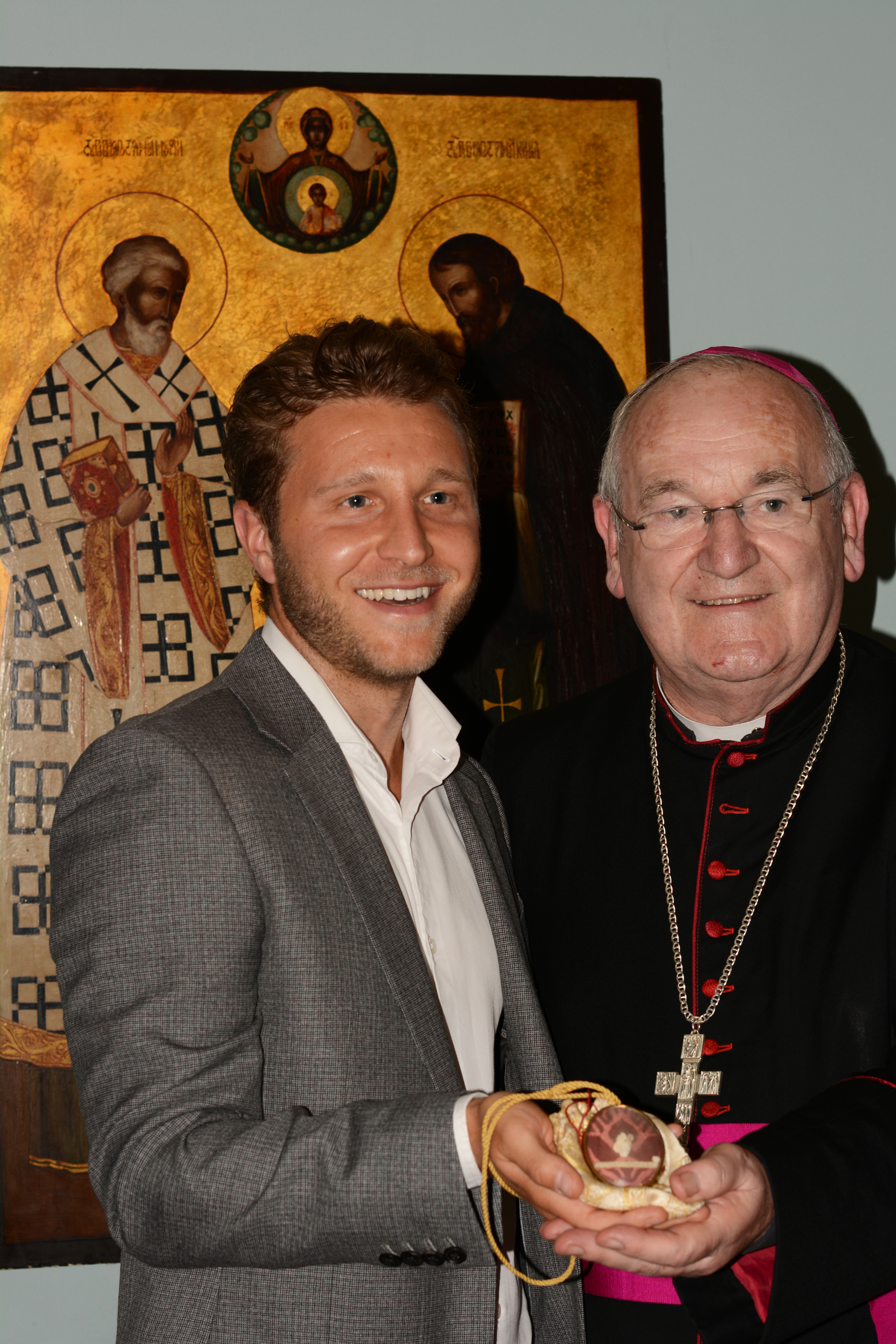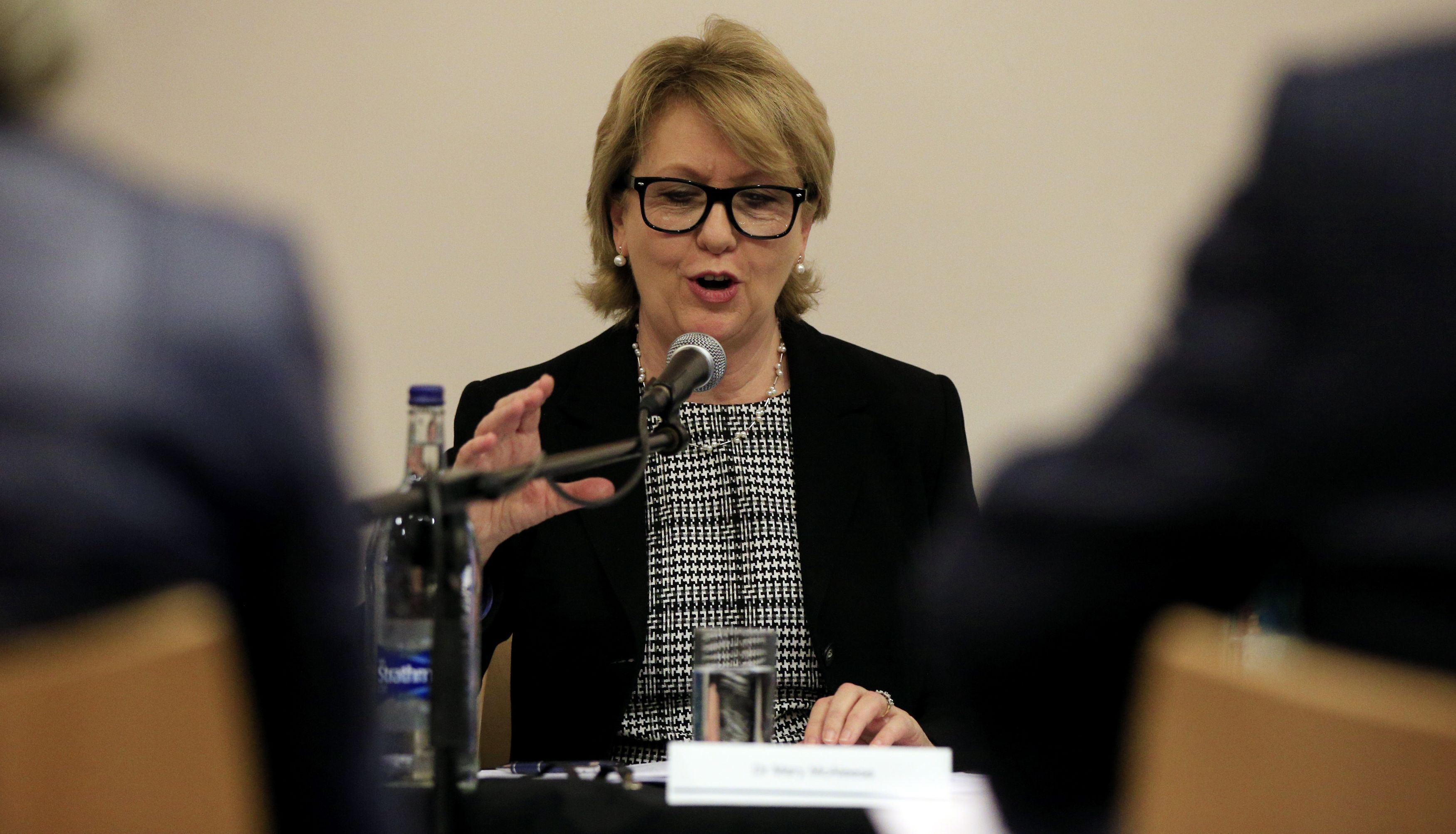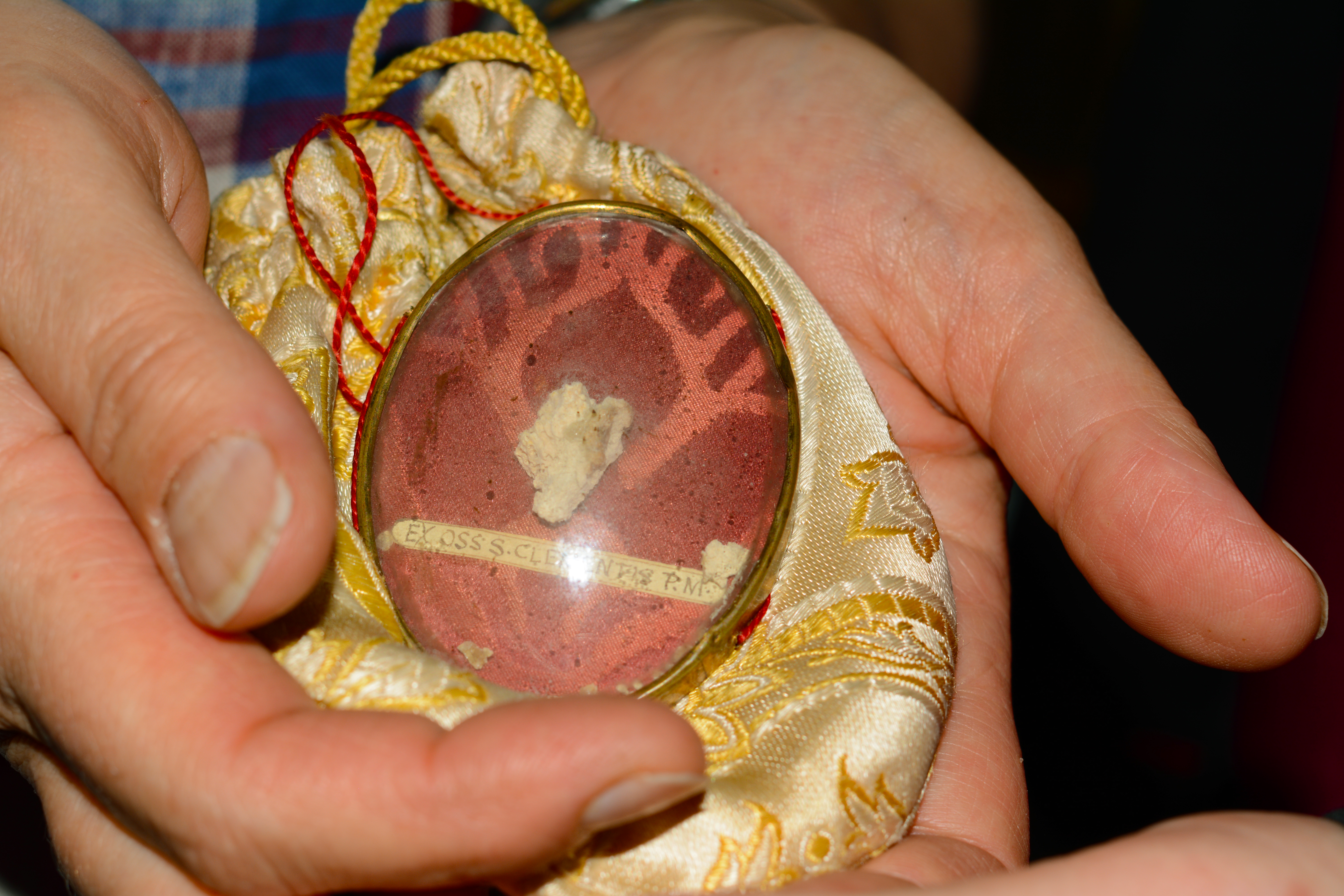The relic of Pope Clement I which was found in a red and gold, wax-sealed case in waste collected from central London is being restored to Westminster Cathedral today.
The relic, a piece of bone, is the personal belonging of someone who wishes to remain anonymous. It was one of a number of items stolen from a car in Central London.
It was found by waste collectors from the Enviro Waste company when doing their rounds in central London earlier this year. Workers did not realise what they had until they appraised the waste a few days later.
St Clement was martyred in the first century by the emperor Trajan who had him tied to an anchor and thrown into the sea. He was Pope from 88 up to his death in 99, the third after Peter and Linus. Believed to have been ordained priest by St Paul and bishop by St Peter, he is considered to be a patron saint or mariners. He wrote a letter to the Corinthians which is one of the oldest surviving Christian documents.
Sophie Andreae, architectural historian and vice chair of the patrimony committee of the Catholic Bishops' Conference of England and Wales got in touch with the owner of Enviro Waste, James Rubin, to request that the relic be restored to Westminster Cathedral.
She said: “Although very little is known about the life of St Clement, it would appear that he was the third successor to St Peter in Rome. This is recorded by the early Christian writer Tertullian (c155-240CE).We (the patrimony committee) were in touch very quickly with James and his company to say that this was of extreme importance from the Catholic perspective and that we would like to find an appropriate home for it. For Catholics relics do have very great importance and significance and this is of course a relic of St. Clement the third Pope, ordained by St. Peter himself in Rome so it is a very, very remarkable artefact."
“Relics are important to Catholics because they are part of the physical remains of a saint after his or her death. Somehow contact with a relic imparts to us a unique link to the divine. Relics of early Christian martyrs were venerated from Roman times and this tradition continues to this day. Whilst the shrines of famous English saints such as St Cuthbert in Durham Cathedral and St Thomas a Becket at Canterbury were destroyed at the English Reformation, on the continent many Catholic churches house relics of important and much revered saints. For example, St Francis and St Anthony attract large numbers of pilgrims from all over the world to tombs in Assisi and Padua respectively and the Basilica of St Peter’s in Rome is built about the crypt containing the bones of St Peter himself."
It is to become one of the exhibits in the Treasures of Westminster Cathedral.

The relic was due to be officially returned by James Rubin, owner of Enviro Waste, to Archbishop George Stack in the Lady Chapel, Westminster Cathedral, pictured above at Westminster Cathedral, in front of a picture showing two eighth century saints from Eastern Europe, St Cyril and St Methodious, who brought the relics of Pope St Clement to Rome, where they were placed in the Basilica dedicated to Pope St Clement which is near the Basilica of St John Lateran in Rome.
Pope St Clement is considered to be the first apostolic father of the church.
Enviro appealed to the public for suggestions of what to do with it. After receiving more than 650 ideas, the original owner emerged and it was decided the bone should be rested at Westminster Catholic Cathedral
Mr Rubin said:“This is probably the most remarkable story coming out of the waste industry right now."
He continued: “You can imagine our amazement when we realised our clearance teams had found bone belonging to a former Pope – it’s not something you expect to see, even in our line of work. After launching our appeal, we were overjoyed to have the cathedral come forward. Choosing an appropriate resting place was very important to us. Therefore, we think Westminster Cathedral is the best and safest place for the bone due to its importance to the church and to ensure that it won’t get lost again.
"We don’t know exactly where it came from because we just ended up with this in our warehouse and it was a strange one because at lunchtime, I tend to walk around the industrial estate and go into the warehouse where we have a range of furniture and electronic waste and I happened to see that on the side on someone’s desk and I thought ‘that’s a bit strange, that doesn’t really belong in the hands of a waste company’.”
Archbishop Stack said: “There is a tremendous living connection with our forefathers and mothers, going back to the days of St. Clement, the Mass used to be celebrated on the tombs of those who have given their lives for the faith. So that constant tradition, a living tradition of holding our forebears in veneration as an inspiration to people today as we try to follow, not the path of martyrdom necessarily, but certainly the witness that they gave.”
Dr Tessa Murdoch FSA, Deputy Keeper of Sculpture, Metalwork, Ceramics and Glass at the Victoria and Albert Museum said verification was made possible in a number of ways. “The label hand written in capital letters ‘EX OSS S.CLEMENTIS P.M.’ probably standing for proto martyr. The dome of the reliquary is held in place by a red thread which is crossed at the back and is sealed with a seal that can be identified either as that of a cardinal or an archbishop. As I speak now with the most recent intelligence Catholic historians, it is a question of how many tassels are attached to the hat. The seal is of course in red wax and so the hat appears to be red, if it was an archbishops hat, it would be green. There are fifteen tassels, the coat of arms of a cardinal has fifteen tassels so that indicates that the coat of arms once identified would help us to date the piece, which we believe is probably as early as the seventeenth century and the cardinal represented was responsible for authorising the production of smaller relics from a principle bone of the saint and distrusting the relics. So we don’t know where this was first received but one suggestion is the fact that the Basilica San Clemente in Rome is the home of the Irish province of the Dominicans and so there may be an Irish connection.”
(Photo: The Tablet)



 Loading ...
Loading ...